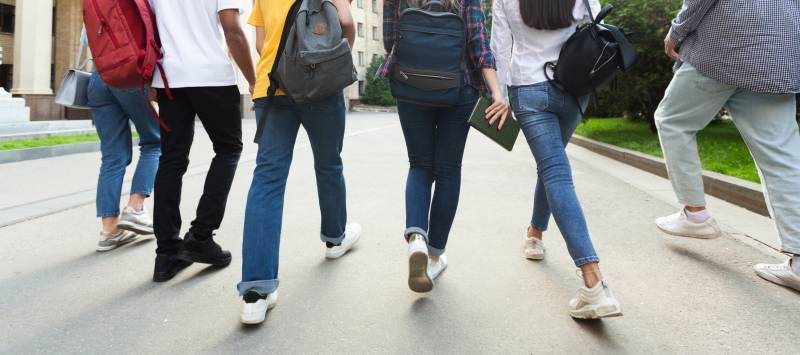“They still get a diploma, which is a good thing,” Rumberger said. “And it kind of shows in some ways a level of perseverance.”
A focus on the five-year graduation rate is built into the model at Indianapolis Metropolitan High School. The school educates many students who transfer in low on credits and face other barriers to graduation, said Principal Christina Lear. And the mayor’s office uses the five-year graduation rate, rather than the traditional four-year one, to judge the charter school.
Some students might need a fifth year to take all the classes they need for their diploma without doing online credit recovery, Lear said. “If that’s the case, we want them to stay with us for the fifth year because we want them to have that stability,” she said.
“We have kind of built our programming to say, whenever you are ready to complete all the requirements is when you should graduate,” Lear said.
In 2018, the graduation rate at the school jumped by over 16 percentage points to 55% after nine students graduated in their fifth year.
The school, which is operated by Goodwill Education Initiatives, has overhauled its model in recent years to offer more support to students and families. That approach has yielded dramatic results, and the four-year graduation rate skyrocketed — it was 82% in 2019. Consequently, fewer students are staying to the fifth year, Lear said. But because they focus on serving students facing barriers, she expects the number of delayed graduates could grow again.
At White’s Jr./Sr. High School in Wabash County, nine students who were originally expected to graduate in 2017 ended up earning their degrees in 2018 — increasing the small school’s graduation rate by nearly 12 percentage points to 65%.
The school serves a combination of students: Some live at a private, residential program for teens placed by the courts. Others participate in an online program that’s open to students from around the state, many of whom were previously placed at White’s or have been suspended or expelled from another school.
Because students are often behind on credits when they enroll in White’s, it can take time for them to graduate, said Tonya Boone, director of the school’s credit alternative recovery program.
“For a lot of our students, it’s easier to quit than finish,” Boone said. In order to keep students enrolled and persisting in the fifth year, she and other educators focus on building personal relationships — even with online students. “It takes lots of texts and phone calls and sometimes face-to-face,” she said.
In many states and communities where five-year graduation rates are regularly reported, the gains are significantly larger than in Indiana. In Colorado, the latest statewide graduation rate jumped by over 4 percentage points once five-year graduates were included. In Chicago, graduation rates rose by about 3 percentage points.
But it’s not clear why relatively few Indiana students graduate in the fifth year. About 87% of high schoolers graduate within four years, which limits the number of students who might be good candidates to graduate in five years. It also has a robust network of adult high schools called Excel Centers, which are not included in the five-year graduation rate data, where students who are close to graduating may be completing their studies.
But there remains a group of students who could be graduating in the fifth year and are dropping out instead. Officially, the state’s dropout rate is about 6%, and it’s clear many students never earn diplomas without being counted in that figure. Chalkbeat’s reporting found that roughly 3,700 Indiana high school students in the class of 2018 were officially recorded as leaving to home-school and removed from the graduation calculations.
More than 40% of the 375 public high schools the state tracked had no students who graduated in the fifth year. And many other campuses had just one or two delayed graduates.
Chalkbeat is a nonprofit news site covering educational change in public schools.


